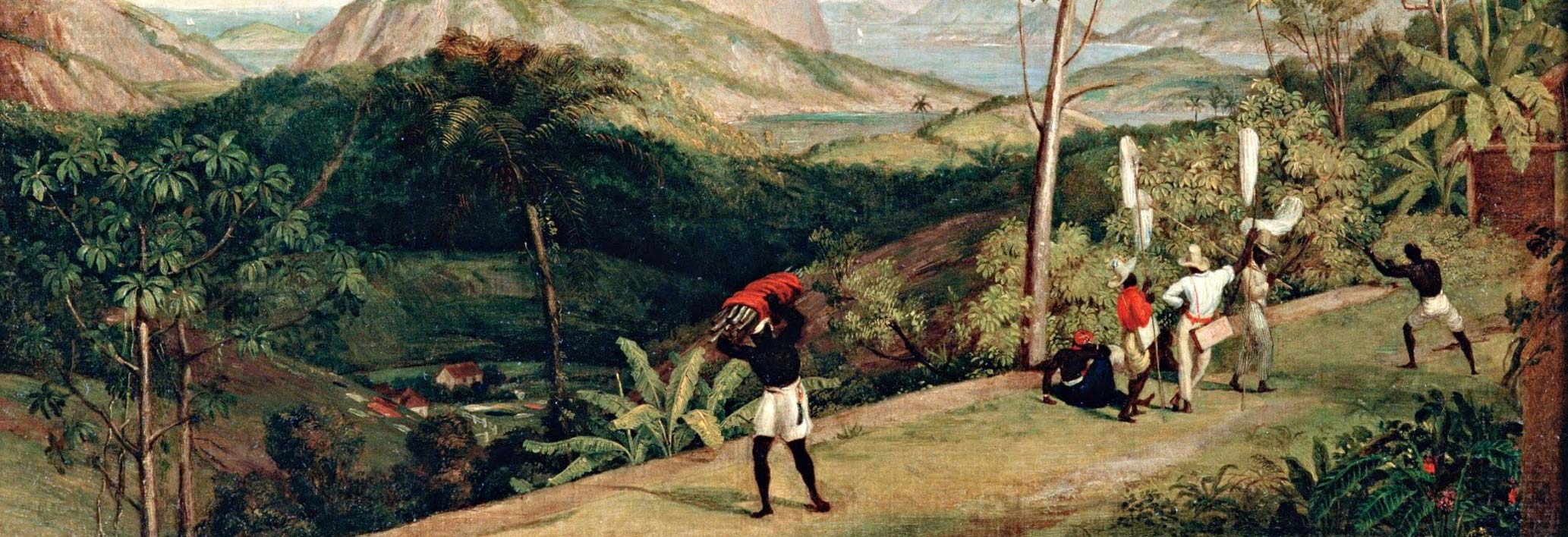Chico Rei is a legendary Afro-Brazilian figure credited with obtaining manumission for himself and his followers and founding an important church.
According to twentieth-century stories, Chico, originally called Galanga, was a king (rei) born in the early eighteenth- century in the West-Central African kingdom of Kongo. Galanga, his family, and other fellows of his village were captured and sold into slavery, eventually working as gold miners in the town of Vila Rica (today Ouro Preto), in Minas Gerais, Brazil. Galanga was baptized Francisco (sometimes reported as Francisdo da Natividade, Francisco Lisboa da Anunciaçao, or Francisco Lázaro), which is often shortened to Chico in Portuguese.
Chico smuggled gold out of the mines in his hair, eventually accumulating enough to purchase his freedom. He then became very prosperous and bought a gold mine in Vila Rica, which allowed him to buy the freedom of his family and other members of his village. Another version of the story states that Chico’s former master gave him the gold mine as thanks for his good service. Once a freedman, Chico Rei and his fellows built the Church of Saint Iphigenia in Vila Rica, which houses the Catholic Brotherhood of Our Lady of the Rosary (a black brotherhood).
No primary sources confirm the story, making it hard to determine whether the legend emerged during the period of slavery or more recently. The first known reference to Chico Rei appeared in the book História antiga de Minas (1904), by Brazilian historian, Diogo Luiz de Almeida Pereira de Vasconcelos. Since then, the story has spread widely in Brazilian popular history and memory.
Local Afro-Brazilian associations in Minas Gerais named groups after Chico Rei to promote the history of Afro-Brazilian heroes. In 1946 the son of a local resident, while playing in the courtyard of his mother’s house, discovered a mine entrance that was blocked with stones. Convinced that her son had found the Encardideira gold mine described in Histórias da terra mineira, Maria Bárbara de Lima named it Chico Rei’s Mine and installed artificial illumination along the one-mile deep mine shaft. It remains open to public visitation and houses a small restaurant.
Although not based on documentary evidence, Chico’s tale amalgamates elements of the real experiences of several different enslaved individuals who came from Africa to work in the gold mines of the interior of southeastern Brazil and eventually purchased their own freedom. His story also helps to construct a biography of an enslaved hero in a country that, despite having imported the largest number of Africans to the Americas, has long undervalued its Afro-Brazilian historical actors.
Online Resources
Chico Rei (film), 1985 https://www.imdb.com/title/tt0088906/
Chico Rei (song), 1964 https://www.youtube.com/watch?v=CUbnMkAeWaQ
Bibliography
Araujo, Ana Lucia. "Chico Rei “Galanga”." Dictionary of Caribbean and Afro-Latin American Biography , edited by Ed. Franklin W. Knight. , edited by and Henry Louis Gates Jr.. . Oxford African American Studies Center, http://www.oxfordaasc.com/article/opr/t456/e486 (accessed Thu Sep 05 10:43:04 EDT 2019).
Araujo, Ana Lucia. Public Memory of Slavery: Victims and Perpetrators in the South Atlantic. Amherst, N.Y.: Cambria, 2010.
Kiddy, Elizabeth W. Blacks of the Rosary: Memory and History in Minas Gerais, Brazil. University Park: Pennsylvania State University Press, 2005.
da Silva, Rubens Alves. “Chico Rei Congo do Brasil.” In Imaginário, Cotidiano e Poder: Memória afro-brasileira, edited by Vagner Gonçalves da Silva, pp. 43–86. São Paulo: Selo Negro, 2007.
Author
Ana-Lucia Araujo
Adapted by
James Almeida and Steven J. Niven
Contributing Institutions
Hutchins Center for African & African American Research, Harvard University, Cambridge, MA.
Oxford University Press (USA) African American Studies Center.





